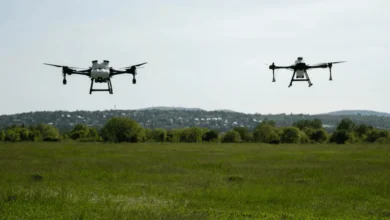How To Choose the Best Rural Internet Option for You
High-speed rural internet can be quite difficult to come by in the US. There’s a real divide in the US when it comes to broadband speed. If you live in an urban area, you can access world-leading internet, but if you’re in a rural area, you’ll probably have to deal with internet that is barely faster than dial-up.
So, if you want to get fast rural internet, what can you do? There are a few different options available to you, each of which has its pros and cons. In this guide, we’ll find the best rural internet option for you by analyzing the most common ways to get internet in a rural area.
Are you ready to learn more? Then read on!
DSL or Dial-Up
If you want to get internet the traditional way, you’ll need to get a DSL or a dial-up connection. While these are better than having no internet connection at all, they’re often not that much better.
Dial-up is a painfully slow way to use the internet, and in many rural areas, DSL connections are not much better. These connections tend to be a recipe for slow or nonexistent streaming, painfully slow loading times on websites, and a complete inability to play online games.
The upside of these connections is that they’re quite common, even in rural areas. They also tend to be cost-effective, however, you could make the case that due to their limited utility, they’re actually pretty pricey.
If all you want is to be able to check your email and read the occasional news story, this type of connection will do the job, but it’s not going to be a fun way to use the 21st-century internet.
Dongles
Dongles are a very common way to access the internet. Thanks to the advent of high-speed 4G and 5G internet, it’s now possible to get very fast internet across the US, wherever you can get these mobile signals.
4G coverage is very common across the United States, but speeds do tend to drop the more rural your location. In some places, you may only be able to get 3G, and, of course, there are vast swathes of the US where you can’t get a cellphone signal at all.
Yet if you can, a dongle can be a good way to get the internet. A 3G or 4G connection is comparable to a good DSL connection, which means that you should be able to stream Netflix and download large files without any issue.
However, there is one significant downside to using a dongle to connect to the internet: data caps. While data caps are pretty common across all types of internet connection, they’re particularly harsh for dongle users, which means that you may be limited in what you can actually use your internet connection for.
If you can live with data caps and you can get a cellphone signal, dongles are a great way to access the internet, albeit an expensive one.
Fixed Wireless Internet
Fixed wireless internet is a fairly new connection type. This works on line of sight technology and can allow rural users to get very fast internet.
The ISP will build a large base station, similar to a cellphone tower. They’ll then connect the base station to multiple high-speed internet lines and the tower will broadcast the internet across a wide area. It works like a very large wifi network, in essence.
To connect to the internet through the signals, you’ll need to buy a special antenna that you can fit to the side of your home. You can then run cable from this antenna into your home and connect the antenna to a wifi router. This means that fixed wireless internet can give your whole home high-speed wifi, even in rural areas.
So, what’s the catch? Well, for a start, fixed wireless internet tends to be pretty expensive.
While you’re not so likely to find data caps, you may struggle to find fixed wireless internet in your area at all. Fixed wireless internet is still a rarity in the US, so you’re not very likely to be able to access it anyway.
If you can access it, it represents a good way to get very fast and unlimited internet in a rural area. However, it’s not the only way.
Satellite Broadband
Satellite broadband is a great way to get strong broadband pretty much anywhere. Satellite broadband works by capturing signals from an orbiting satellite with a satellite dish, which means that so long as you’re within the (usually massive) satellite footprint, you can get fast broadband, no matter where you are.
To get satellite broadband, you’ll need to enlist a company like Yellow Jacket Broadband, which can install a satellite dish on your home. You can then receive broadband from the satellite and, like with fixed wireless internet, feed cables to a wifi router to give your whole home coverage.
There are some issues with satellite broadband: set up costs can be quite expensive, and it tends to be more expensive than a DSL package. However, in return you get fast internet, and, depending on the package, unlimited data, which means you can enjoy everything that the internet has to offer.
What’s the Best Rural Internet Option?
The best rural internet option is, for most people, satellite broadband. It’s a great way to access the internet and is available pretty much anywhere, allowing you to enjoy Netflix and online gaming wherever you are.
If you’ve enjoyed this article and would like to read more like it, check out the rest of our blog!






